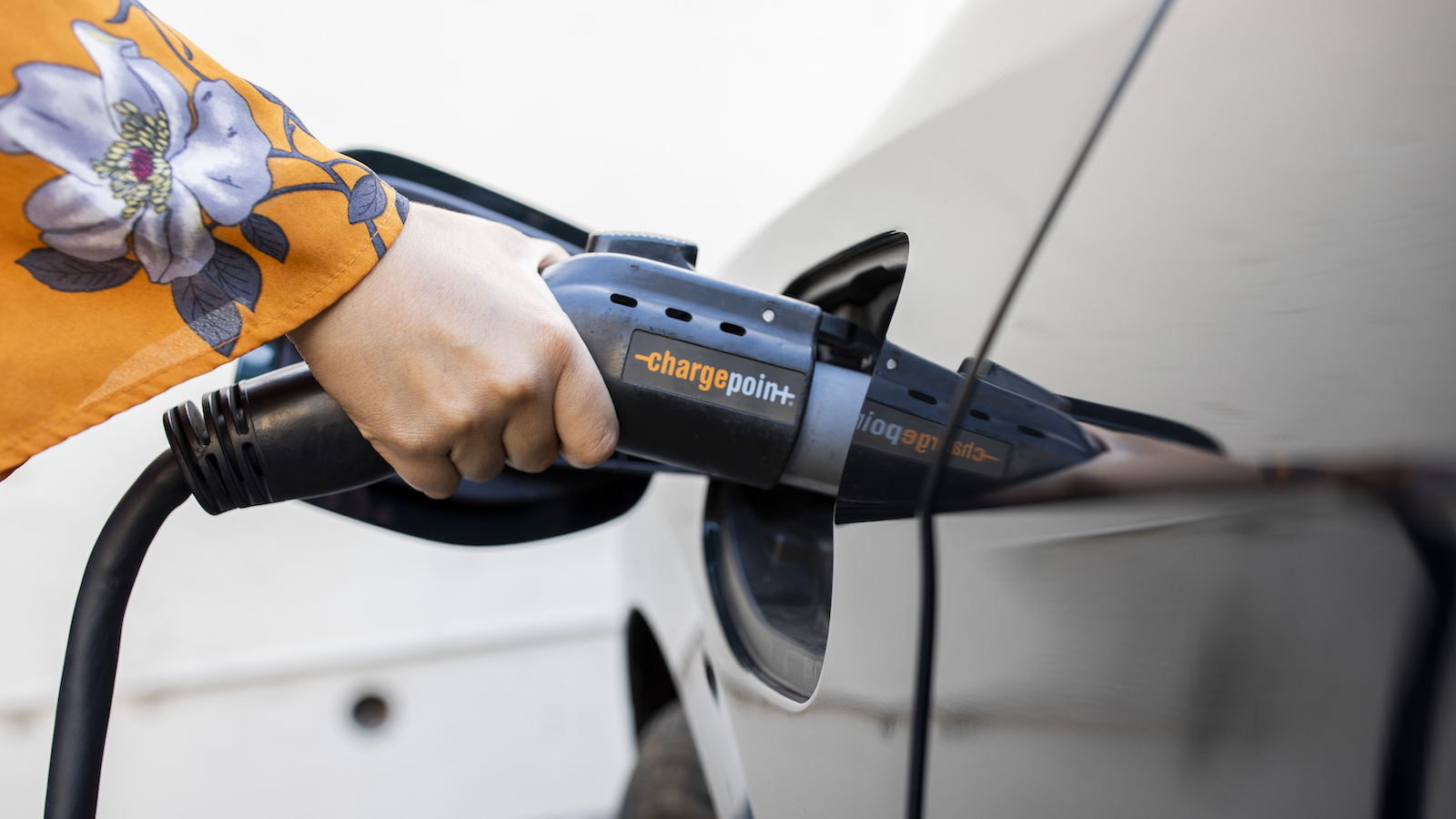A coalition of more than 50 power utilities has announced a major new effort to install EV infrastructure across the U.S. By the end of 2023, it said this week, EV owners will be able to quickly charge their cars at fast-charging stations along most of the country’s major travel corridors.
The National Electric Highway Coalition, which was announced on Monday, includes 50 members of the Edison Electric Institute, or EEI — an association that represents all U.S. investor-owned electric companies — as well as the Tennessee Valley Authority and a Midwestern electric cooperative. According to an EEI fact sheet, members of the coalition are committed to a “good faith” effort to quickly install fast-charging infrastructure across their jurisdictions. This network of fast chargers — which can charge an EV in just 20 to 30 minutes, as opposed to the hours or even days that lower-voltage chargers can require — is set to allow the public “to drive EVs with confidence regardless of where they live.”
“[W]e are committed to investing in and providing the charging infrastructure necessary to facilitate electric vehicle growth and to helping alleviate any remaining customer range anxiety,” Tom Kuhn, president of the EEI, said in a statement.
Indeed, polls have consistently shown fears about running out of power and a lack of charging infrastructure to be the greatest barriers to EV adoption. ”Range anxiety is a challenge, especially for new EV drivers,” said Jennifer Weiss, an electric vehicle researcher focused on the Southeast. She said that the new initiative could demonstrate to consumers that EV charging stations are widely accessible. As a bonus, she added, it could also spur utilities to accelerate investments in the electric grid to accommodate increased energy demand from more electric cars.
The coalition’s new initiative is intended to accommodate continued growth in EV sales. By 2030, EEI predicts there will be nearly 22 million EVs on U.S. roads, thanks in part to pressure from the Biden administration, whose climate agenda involves making half of new car sales electric by 2030. Many of the world’s biggest car companies — including Ford and General Motors — have pledged to meet that target, or come close to it.
The Biden administration has also set a target of installing half a million EV charging ports by 2030 — potentially using the $5 billion of federal funding designated for EV chargers in the recently signed bipartisan infrastructure bill. That funding will be delivered to U.S. states, whose transportation departments will help administer grants for the deployment of EV charging stations. The National Electric Highway Coalition said it would seek to take advantage of that funding and to complement similar efforts from nonprofits and the private sector — including a project sponsored by the Natural Resources Defense Council to create an “action plan” for the development of a national charging network. Companies like Hertz and Tesla also have recently announced plans to install more charging stations in the coming years.
Timothy Johnson, chair of Duke University’s Energy and Environment Program, applauded the new coalition but stressed the importance of cross-platform functionality. “If you have a lot of privately owned networks out there,” he said, “it’s going to be sort of confusing.” He envisioned a situation in which mobile apps used to locate charging stations may only show stations that are owned by a particular company, or in which drivers locate a charging station only to find that it is incompatible with the make and model of their EV. (Notably, access to the bipartisan infrastructure bill’s EV funding will only be made available to companies that make their charging stations compatible with vehicles from more than one carmaker.)
Katherine Stainken, senior director of EV policy at the nonprofit Electrification Coalition, called the National Electric Highway Coalition’s initiative a “critical” first step toward meeting the U.S.’s climate targets, although she said she was eager to see participation from more electric cooperatives. “We hope that we’ll see 100 percent coverage, but for now it’s a great start,” she said. “It’s the first step of an unfolding process.”



